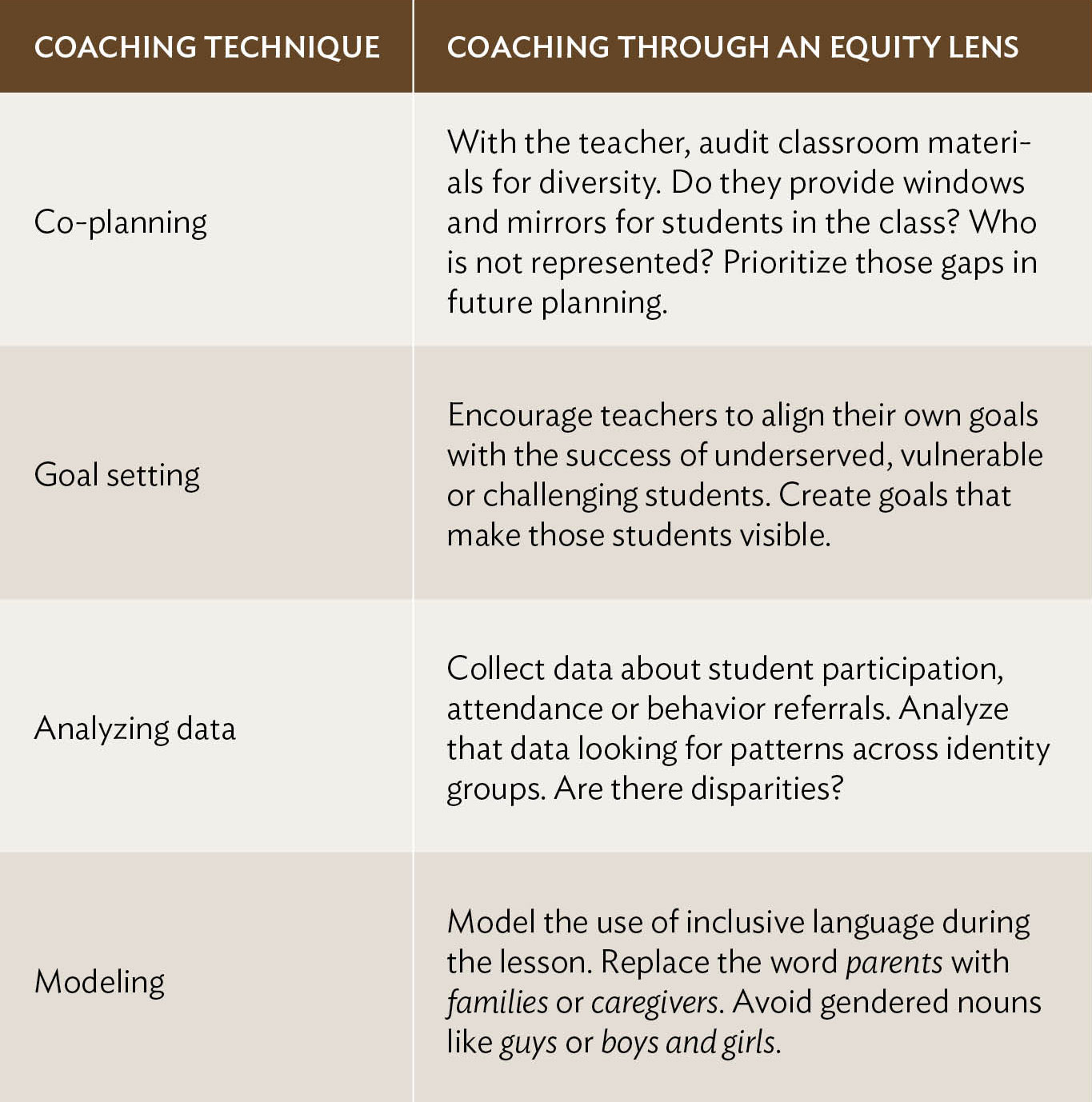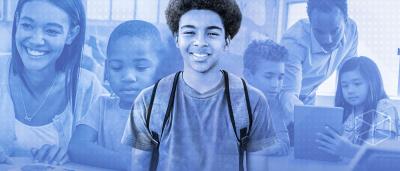Second-grade teacher Rachel Mulligan was like most early-career teachers: When it came to the curriculum, she followed the lead of her more seasoned colleagues. But when a fellow teacher handed her a folder of 200 worksheets and said, “This is our unit on Australia,” Mulligan took one look and turned to her mentor, Jim Hiller, for help.
The unit was a prime example of a “food and fabric” approach to teaching about culture. Mulligan particularly wanted her students to learn about the lived experiences of indigenous people in Australia. After thinking about her goals, Mulligan and Hiller co-planned an original activity in which students were given stereotypical and nonstereotypical pictures of indigenous people and told to sort them into groups. After explaining that all of the images were of Aboriginal Australians, Mulligan led a discussion with her students about problems that occur when we promote stereotypes and judge people based on their appearance. “I’m so glad she chose to go through with the conversation, and her class ended up having a really rich conversation,” Hiller says. The mentoring process yielded a foundational lesson in anti-bias education that Mulligan would return to throughout the school year.
Mentoring and instructional coaching programs can be powerful tools for increasing equity in schools and building cultural proficiency in teachers. Because these relationships are intended to be nonjudgmental and confidential, they create a low-stakes environment where teachers feel safe to speak honestly about how the dynamics of identity play out in their classrooms. Coaches and mentors can tailor their support to the specific needs of the teacher they’re assigned to help and to the culture of that teacher’s classroom.
Coaches and Mentors: What’s the Difference?
Instructional coaches tend to be building-based, chosen by the principal and positioned as content experts. Mentors, by contrast, often give support in non-academic, even personal areas of the new-teacher experience. While the roles played by mentors and coaches are distinct and vary from district to district, both occupy a space where teacher practice can be transformed—including developing cultural competency and promoting equity.
Tovah Koplow, director of the Instructional Coaching Program for District of Columbia Public Schools (DCPS), says that one of the ways her district is making equity a priority is by staffing nearly every school with an instructional coach. “Every single teacher can be developed and every single teacher can grow,” she says. “As a result of growing every teacher, we’ll be growing and supporting every student. That way we can ensure that every one of our students has the best teacher standing in front of them.”
Mulligan teaches in Beaverton, Oregon, where the district-based mentoring program follows the New Teacher Center’s model in which first- and second-year teachers are paired with full-time mentors like Hiller. Mentors have a maximum caseload of 16 teachers, typically spread over multiple schools. Hiller says, “We aren’t influenced by school politics. That works in our favor. Our primary goal is to support the teachers.”
Doing What Works
Coaching doesn’t just benefit teachers; there is evidence it helps students academically as well. A four-year longitudinal study of the Literacy Collaborative program—funded by the U.S. Department of Education’s Institute of Education Sciences—found that schools participating in the program saw students’ literacy learning increase in tandem with their teachers’ level of expertise. The Literacy Collaborative notes, “Teacher expertise increased substantially and the rate of improvement was predicted by the amount of coaching a teacher received.”
But what does coaching that is culturally responsive look like? In their book Culturally Proficient Coaching: Supporting Educators to Create Equitable Schools, scholars Delores Lindsey, Richard Martinez and Randall Lindsey explain, “Culturally proficient coaching intends for the person being coached to be educationally responsive to diverse populations.” And, as Transformational Leadership Coach Elena Aguilar wrote in Education Week, “Coaching with an equity lens means that we pay attention to the social and historic forces which create and maintain systems in which children are treated differently based on who they are.”
The facilitative and collaborative nature of coaching is itself more responsive and engaging for adult learners than traditional professional development formats, such as single-session workshops and “sit-and-get” trainings. This personal attention is especially important because being culturally responsive requires teachers to tread in sensitive areas, such as assessing their own culture, examining their biases and challenging inequalities in their classrooms. As Koplow puts it, “[Coaches] need to use their relationship and their ability to show how valuable they are and [how valuable] the work that they will do with the teacher is. That’s the foot in the door.”
The coach-teacher relationship has another key advantage: It’s often non-evaluative. But when the mentor steps into an evaluative mode, it’s important that this relationship is rooted in trust. Delores Lindsey points out, “Good coaching does not assign judgment.”
Hiller tries to build a trusting relationship early on with beginning teachers. He does this in a number of ways—learning about their families, asking about their journey to teaching, and even finding out their favorite hot beverage. “Because we have that trusting relationship, they’re going to start opening up to me about things as things start to come up,” says Hiller, adding that he regularly gets questions about diversity issues, struggling students and issues new teachers may be facing on their team or in their school. “If you don’t have that relationship, that’s just simply not going to happen.”
Good mentors and coaches also use listening to facilitate reflection. Delores Lindsey explains that a culturally proficient coach will listen more than talk, and “paraphrase[e] in a way that the person you’re coaching hears their own thinking.” This technique provides the teacher being coached a mirror for self-reflection. “Reflection has direct implications for culturally responsive teaching,” says Hiller, “because if you’re not doing that, you’re not going to be consciously reaching out to your diverse student population.”
Coaches and mentors can tailor their support to the specific needs of the teacher they're assigned to help and to the culture of that teacher's classroom.
But coaching for equity is not limited to conversations and reflection. A deliberate focus on praxis is necessary as well. Consider this scenario:
An instructional coach working with a fifth-grade teacher notices that a particular student’s name comes up every time they meet. The teacher, who is white, uses words like “bad” and “problem” to describe the student, an African-American girl. “She’s shouting out in class,” the teacher complains. So, in his next observation, the coach focuses his notes on the girl’s interactions with her teacher and peers. He observes, “This girl tried to participate in this math lesson seven or eight times by raising her hand and was never called on.” In the debrief, he asks the teacher, “You didn’t call on her. Why?” The teacher tells him that every time she calls on the girl, the student gives the wrong answer. Again, he cites what he observed. “I sat behind her and listened to what she was whispering to her neighbors. She had the right answer.” By taking note of the teacher’s actions and tracking student participation, he is also able to show the teacher that she had, in fact, called on several other students with wrong answers.
In presenting objective data, asking reflective questions and allowing for pauses, the coach was able to start a meaningful conversation about equity in the classroom. In that conversation, several concrete suggestions might be made. In this case, the teacher shifted her practice and began to use Popsicle sticks to track how often she called on students. Two weeks later, her coach returned to collect more data and noticed marked improvement, not only in the girl’s participation, but also in overall engagement among all the students.

Coaching the Coach
In the Journal of Language and Literacy Education, coaches Jan Burkins and Scott Ritchie write, “One of the biggest obstacles to coaches and to districts hiring them is how to support the professional development of the coach.” This obstacle can be especially steep when culturally responsive coaching is the goal, because culturally responsive teachers do not automatically possess the skills to mentor or coach for equity. In addition to content knowledge, an effective coach possesses a set of skills specific to coaching. Obtaining those skills requires training, and without sustained investment and prioritization on the part of the school or district, coaches will have little impact.
On top of acquiring a basic set of coaching skills, coaching for equity requires self-awareness and awareness of the needs of diverse students. Delores Lindsey calls this the “inside-out approach” to cultural proficiency. Examples of the inside-out approach can be found in “Mentoring for Equity,” a two-day training program offered by the New Teacher Center in Santa Cruz, California. And this school year, instructional coaches in DCPS will be working with the district’s “Empowering Males of Color” initiative to receive inside-out training around issues related to cultural proficiency.
Back in Beaverton, Mulligan is emerging as a budding teacher leader who knows herself inside and out. She was horrified by what she observed during her second year when she sat in on an IEP meeting for one of her Spanish-speaking students. The special education director refused to allow extra time to include a translator. Mulligan spoke with Hiller about what she viewed as racist treatment of the student. After role-playing the conversation with Hiller, Mulligan was able to bring the issue to her principal. The administration immediately changed school policy to double the amount of time given for IEP meetings where translation is needed.
Coaching for equity, like teaching for equity, means being an advocate for students in the margins, Hiller explains.
“It took my teacher bringing that to people’s awareness,” he says. “I was so proud of her.”

